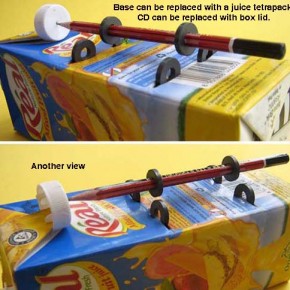Toys from trash? Recently I stumbled upon a website and a TED talk by Arvind Gupta, an Indian toy inventor, educator and popularizer of science for kids. Since the 1970s he proves that it takes indeed very little to make science education fun. Gupta creates simple toys from trash and everyday goods and illustrates many scientific principles in a hands-on and memorable fashion.
Science is a game, not a formula
Sometimes teachers and schools tend to complain about the lack of funding or equipment when it comes to science education. Sometimes that serves as a justification of the fact that students don’t do experiments on their own but learn formulas instead. Sometimes you just don’t have no school but kids want to learn anyway. After watching Gupta’s videos and trying some of his toys and experiment with my son, I am convinced that Gupta has found the right approach. He brings together what isn’t so far from each other anyway: scientific research and playing games. Science means fun, curiosity, discovery and often a game of trial and error. In science education learning formulas should always come afterwards and should never be a stand-alone feature of a lesson.
Arvind Gupta works at the Children’s Science Centre in Pune, India, and is the author of numerous books available in English, Hindi and other Indian languages, including Little Toys (PDF), Science Skills & Thrills: The Best of Arvind Gupta (PDF) and Low-Cost Equipment for Science and Technology Eduction, which is available as a PDF download through the UNESCO.
Most of his low-cost, entertaining toys are explained in one-minute films available on Arvind Gupta’s Youtube channel or his website, but also in pictures.
All images courtesy of Arvind Gupta









